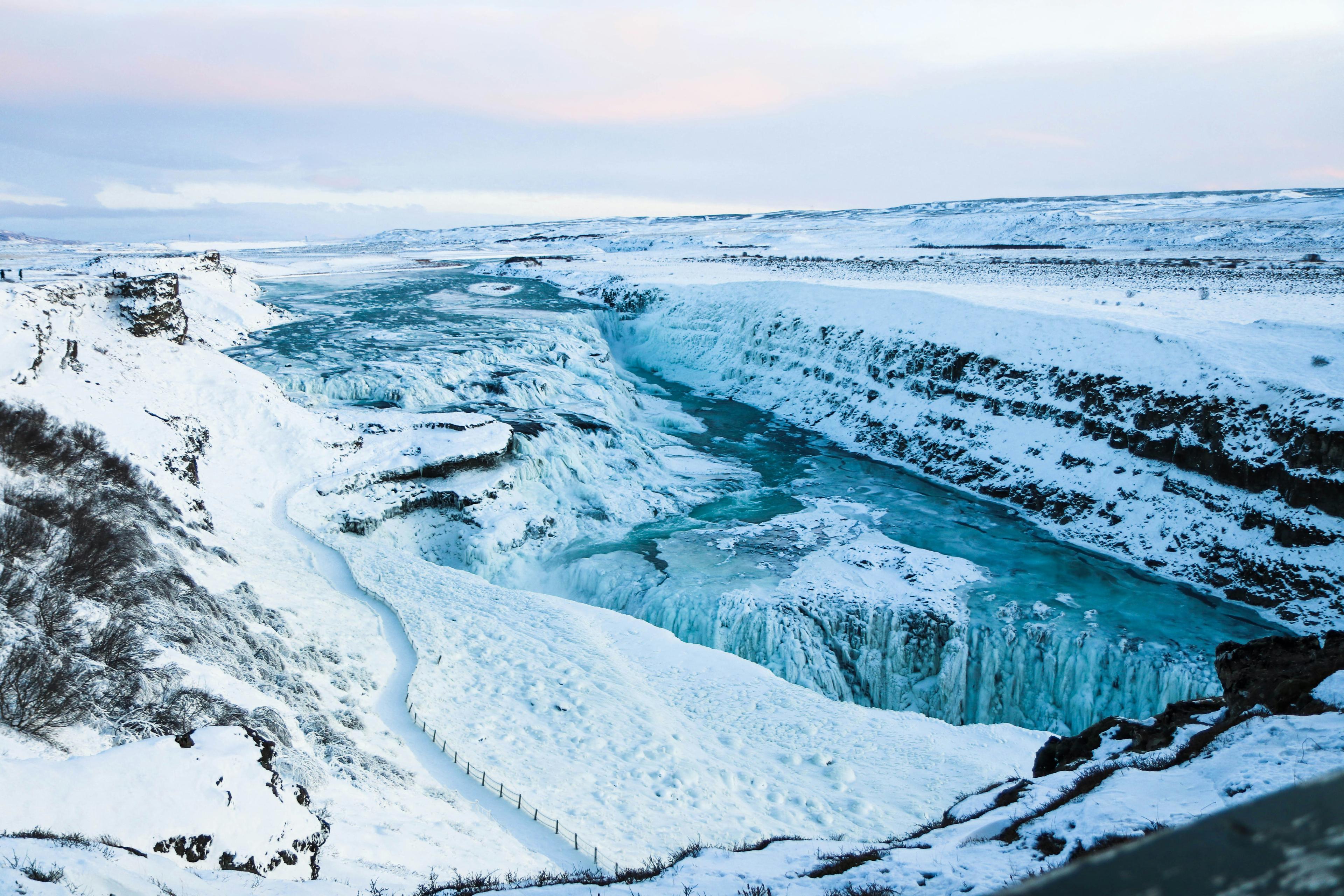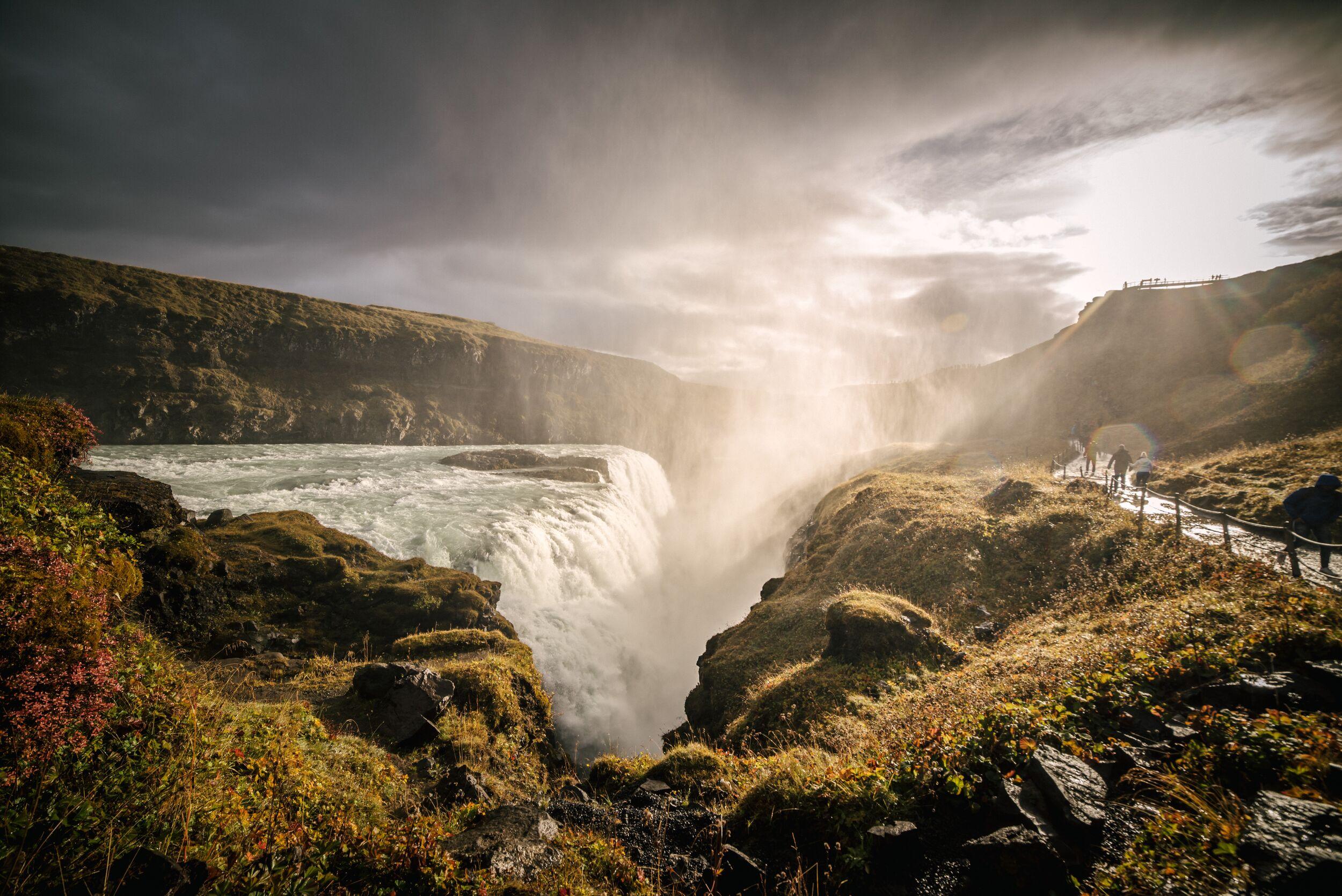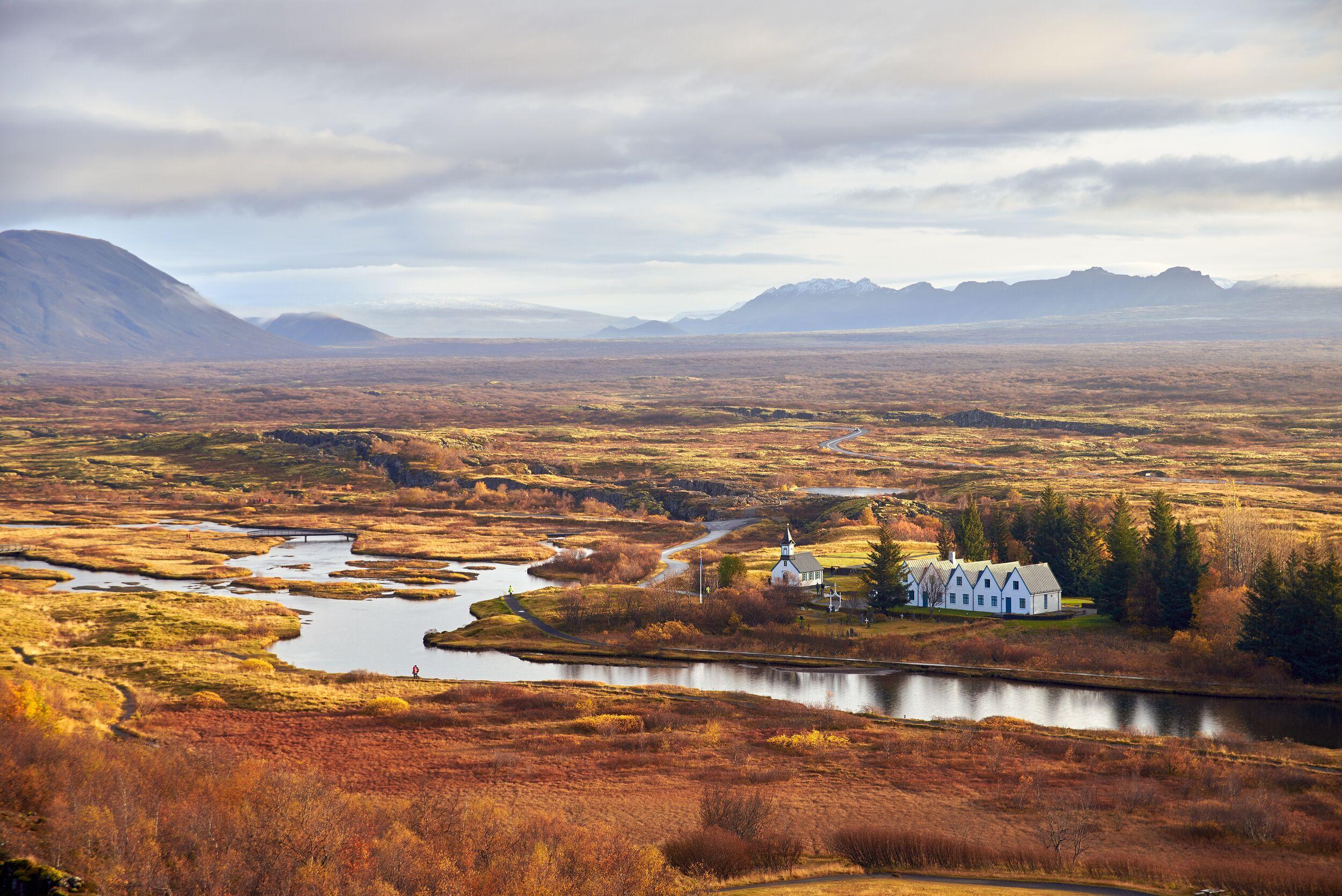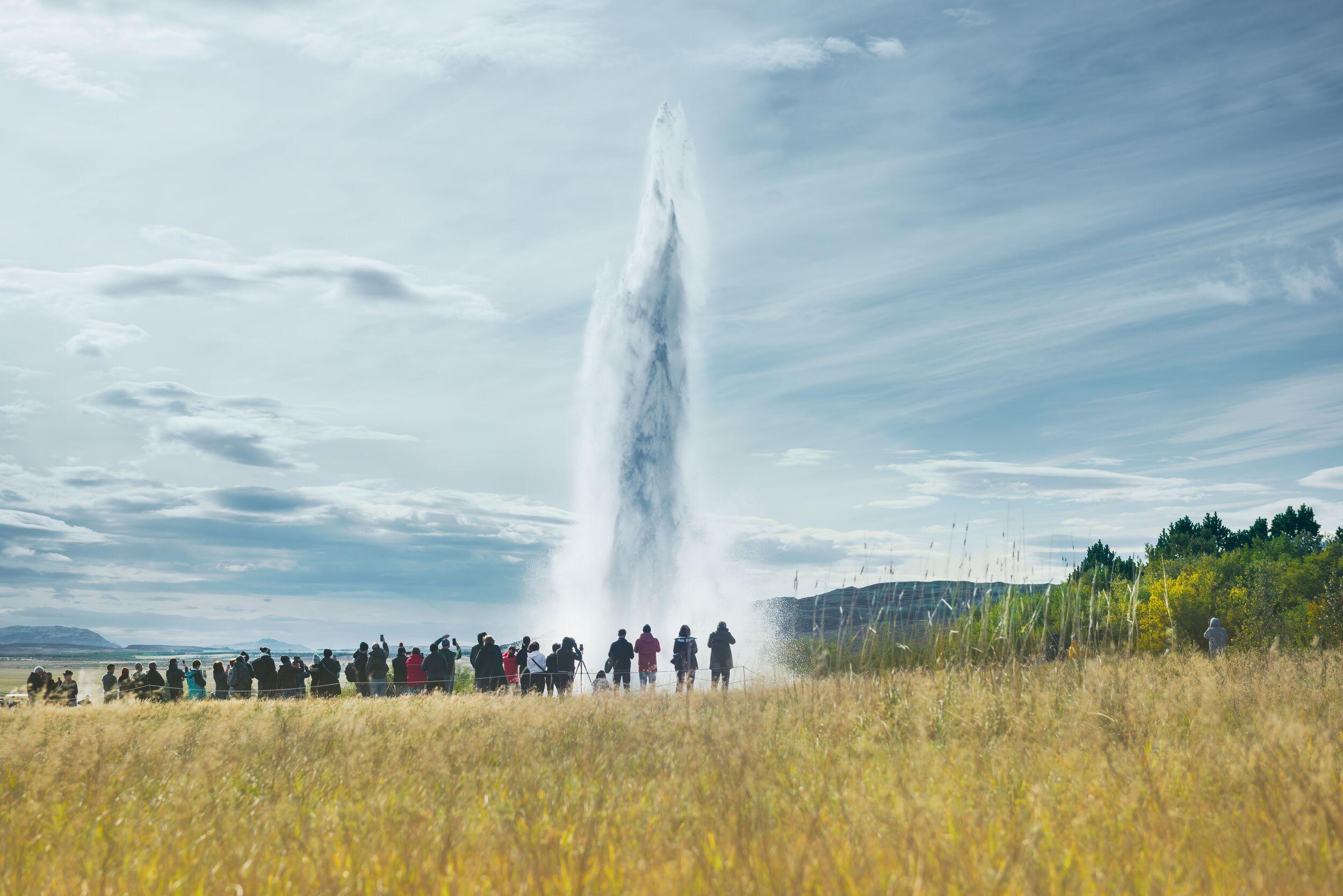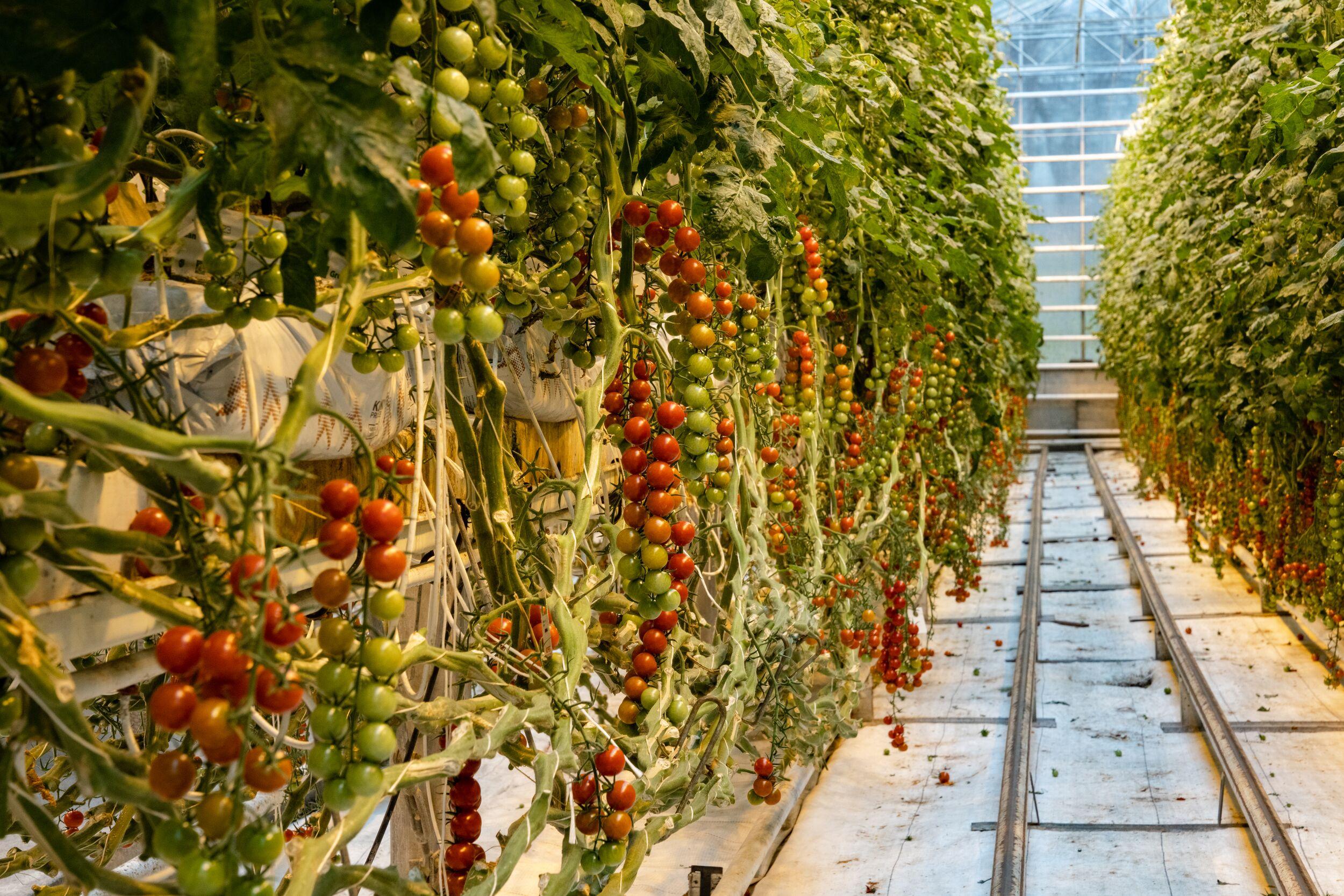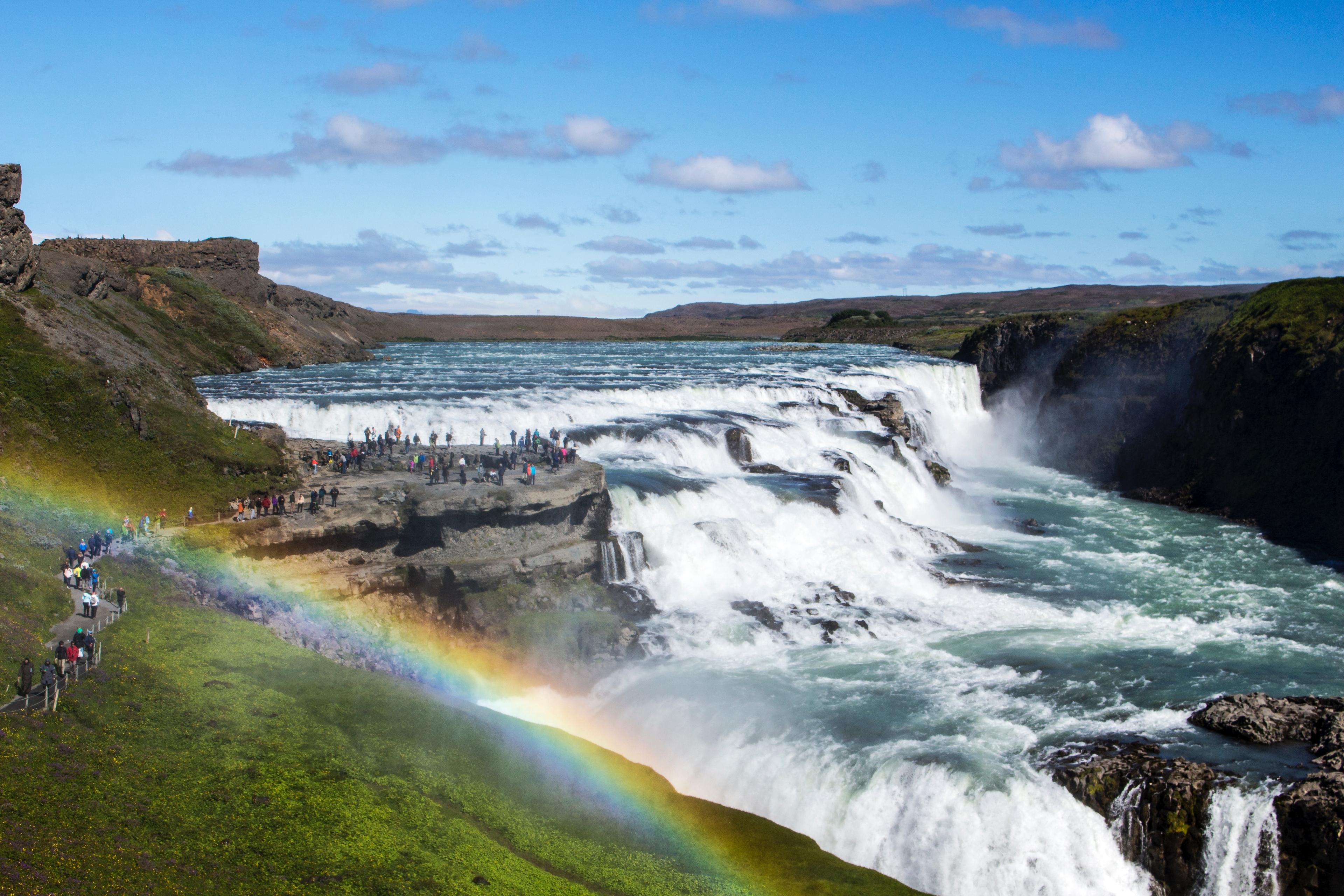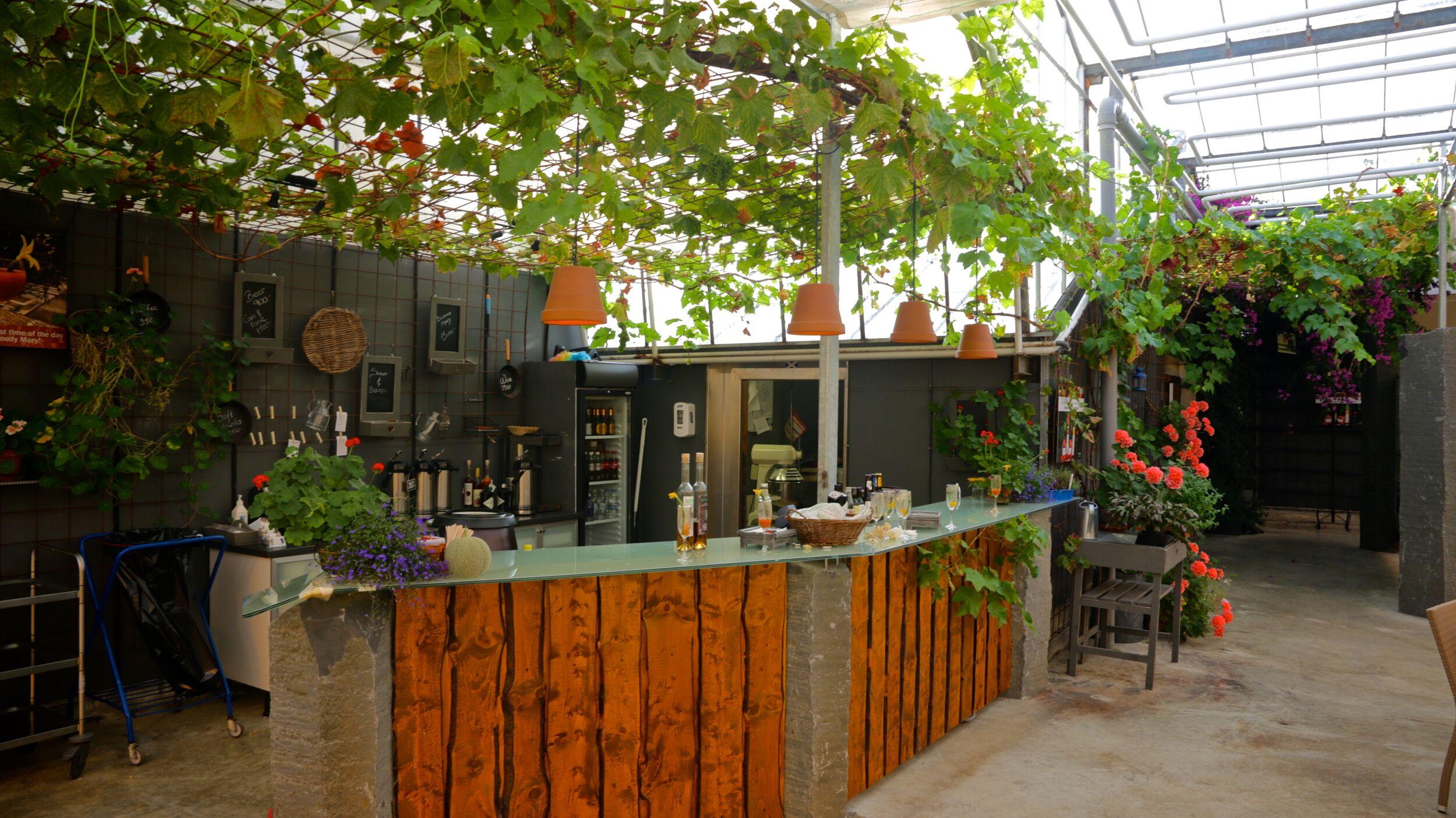
The Greenhouses and Stables of Friðheimar Farm
Farming at Friðheimar in near-Arctic conditions
Iceland has a long and difficult history with farming. The barren, wind-beaten landscape doesn’t lend itself to vast fields of crops and the lack of sunshine means traditionally Mediterranean vegetables were out of the question for a long time.
In the middle ages, the population relied heavily on wheat and grain to stave off hunger, baking bread and hunting and gathering for meat, herbs and vegetables. As a result, the Icelandic diet is traditionally based on lamb flavoured with Arctic herbs, chard, rye bread and a lot of fish and seafood.
So, you might be surprised to hear that one of the most popular lunch stops along the Golden Circle sightseeing route is a restaurant that specialises in juicy tomatoes. The Friðheimar greenhouse farm is home to vast glasshouses where curling green vines produce plump tomatoes of all kinds, year-round.
The natural, geothermal water that simmers beneath the farm heats the greenhouses in an eco-friendly way and the glass protects the vegetables (ok, technically tomatoes are a fruit, we know) from the harsh weather outside.
Tomatoes are 90% water, so they need a lot of irrigation to grow. Luckily, Iceland’s glacial landscape isn’t short of natural water supplies and the cold water from the same geothermal spring that heats the greenhouses provides the hydration for the tomato plants.
Friðheimar controls pests by introducing small, green flies that feast on the insects that afflict tomato crops, without using chemicals or sprays. So the whole operation is natural and environmentally friendly.
It can be a long time before tomato plants bear fruit, so the Friðheimar farm uses a system of interplanting to ensure they are harvesting tomatoes all year. Just as the older plants are producing the last of their harvest, newer plants’ produce is just coming to fruition.
Things to experience at Friðheimar
Arriving at Friðheimar, you should definitely take a moment to learn about the innovative farming techniques used to grow hot-weather fruit this far north. A visit to Friðheimar usually begins with a tour of the greenhouses and nurseries where you can see how everything works before settling down for a meal.
Of course, no trip to Friðheimar is complete without sampling the results of farmers Knútur and Helena’s huge efforts. A buffet of salads with juicy tomatoes, gooey mozzarella and the farm’s fresh cucumber, bowls of piping-hot tomato soup and handmade ravioli is on offer.
There is also home-baked bread (gluten-free options are available) and stone-baked tortillas, and sea-fresh mussels in a tomato-based sauce. It’s a veritable haven for vegetarians and there are some vegan options too. The restaurant is an impressive spot, housed within the glasshouses themselves. Sunlight streams in through the glass ceiling during the day and you can breathe in the scent of ripening tomato plants as you dine.
Once you’ve had your fill of tomato soups and salads, you can pay a visit to the farm’s herd of Icelandic horses. This small, sturdy breed is famed for its friendly demeanour and unique gait. Friðheimar farm has been breeding Icelandic horses for decades and you can visit the stables year-round.
Those that visit Friðheimar in the summer months (between 1st May and 30th September) can be treated to a horse show (must be booked in advance) where the different gaits of this unique horse are shown off and you can meet the Icelandic horses and their trainers at the end.
Sights and Attractions Around Friðheimar
In the small village of Reykholt, Friðheimar is situated on the Golden Circle – the popular sightseeing route that begins and ends in Reykjavík. You’ll find Friðheimar a 45-minute drive from Þingvellir National Park which is often the first stop on the Golden Circle where the Eurasian and North American continental plates meet. It’s then a half-hour drive onwards from Friðheimar to the Geysir area of geothermal activity where the Strokkur geyser erupts like clockwork every ten minutes.
Just beyond Geysir is the third and final stop of the Golden Circle – the thundering horseshoe falls of Gullfoss. Between the first two stops on the Golden Circle, Friðheimar is the perfect place to take a break for lunch. Several Golden Circle guided tours include a stop at the tomato farm for lunch and a tour.
A very short drive away (10 minutes), you’ll find the Secret Lagoon which is considered Iceland’s oldest outdoor swimming pool. The Secret Lagoon is heated naturally by a geothermal spring and offers a traditional Icelandic bathing experience outdoors. It is the perfect tonic after a long lunch at Friðheimar.
After a hearty lunch of soup, bread and salad and a long soak in the bath-warm water of the Secret Lagoon, you’re guaranteed a deep sleep at night. There are a few options for overnight accommodation in Reykholt village, but most people will visit Friðheimar on a Golden Circle day trip and return to Reykjavík at the end of the day.
Questions and Answers about Fridheimar Greenhouse on the Golden Circle
Friðheimar is open year-round and only closes for a few days over the Christmas period. In winter, the greenhouse dining room offers a blissfully warm retreat from the harsh weather outside and a steaming-hot bowl of tomato soup makes for an ideal lunch during the coldest months. However, those visiting between 1st May and 30th September also have the opportunity to catch the Friðheimar horse shows and visit the Friðheimar farm stables and meet the famously friendly and unique Icelandic horses.
The Friðheimar horse show only takes place in summer but you can visit the stables year-round to meet the Icelandic horses. Horse riding itself is not offered at Friðheimar, but you can book a visit to the stables for individuals or groups and you will get a chance to witness the unique gaits of the Icelandic horse under the guidance of their trainers.
The Friðheimar farm is famous for two things: tomatoes and horses. Vast greenhouses are naturally heated by geothermal activity, allowing rich tomatoes to be grown even in Iceland’s harshest winters. The Friðheimar stables are home to a small herd of Iceland’s unique breed of horses which are known for their small stature, friendly demeanour and pure breeding.
Friðheimar is considered one of the most family-friendly places in Iceland. Kids of all ages can enjoy meeting the Icelandic horses at the farm’s stables, catching a horse show in the summer months and learning about where their food comes from before they sit down to a hearty, healthy meal in the greenhouse restaurant. There are children’s portions and kids can even try tomato ice cream for dessert.
Friðheimar is in the small village of Reykholt in the southwest of Iceland. It is on the popular Golden Circle sightseeing route, so it’s the ideal lunch stop if you’re spending the day chasing waterfalls and exploring Iceland’s biggest natural wonders. Friðheimar is a 97-kilometre drive from Reykjavík, so it takes around an hour and twenty minutes to drive directly here. Most people would incorporate a stop at Þingvellir National Park on the way when following the route of the Golden Circle. Friðheimar sits between Þingvellir and the Geysir area of geothermal activity and is close to the Secret Lagoon.
Friðheimar was the first farm in Iceland to grow plum and Flavorino cocktail tomatoes all year round. Delicious, healthy tomatoes are cultivated throughout the year thanks to Green energy, natural pest controls and pure Icelandic water. It can take a long time for tomato plants to reach fruition, so Friðheimar operates a system of interplanting, ensuring a tomato harvest at all times of the year. But it’s the abundant supply of geothermally-heated water that keeps the greenhouses warm and tomatoes ripening throughout the year.
While there is no hotel on Friðheimar farm itself, there are a handful of overnight accommodation options in the surrounding Reykholt village. There is a hotel just down the road from Friðheimar, a few locally-run guesthouses within the village streets and some cabins that can be rented in the village and out in the surrounding countryside.
Vegan, vegetarian and gluten-free options are becoming more and more popular across Iceland in general. Friðheimar is one of the best options for vegans and vegetarians in Iceland because it offers a buffet of tomato-based soups and salads. While the classic tomato soup is served with sour cream and some of the salads feature mozzarella and burrata, there are options for vegans. But this is definitely one of the best places for vegetarians in Iceland. There are some meat and fish dishes available too, like handmade ravioli and sea-fresh steamed mussels.
While there is a chance you can walk into Friðheimar without a booking and get a table, it is best to make a reservation to avoid disappointment. Friðheimar can be particularly busy in the summer months and sees the most visitors at lunchtime. If you are visiting in peak season for lunch, or are travelling as a large group, you will definitely want to make a reservation for Friðheimar.
Not only is Friðheimar a fabulous restaurant serving the freshest tomatoes, but it is also an experience in itself. On arrival, you can enjoy a tour of the greenhouses where tomatoes grow fat and juicy in near-Arctic conditions, heated naturally by the island’s geothermal activity. The dining room is within the greenhouses, so sunlight streams in as you dine and it’s toasty warm inside. Reviews of Friðheimar and feedback from guests are overwhelmingly positive, so it is definitely worth a stop, especially if you are looking for lunch along the Golden Circle.
Gluten-free bread is available at the Friðheimar restaurant. Usually, it won’t be on display with the rest of the buffet items, but you can ask for gluten-free bread with your tomato soups and fresh salads and the kitchen will happily provide it.
Related Articles
See all articlesTours to Fridheimar
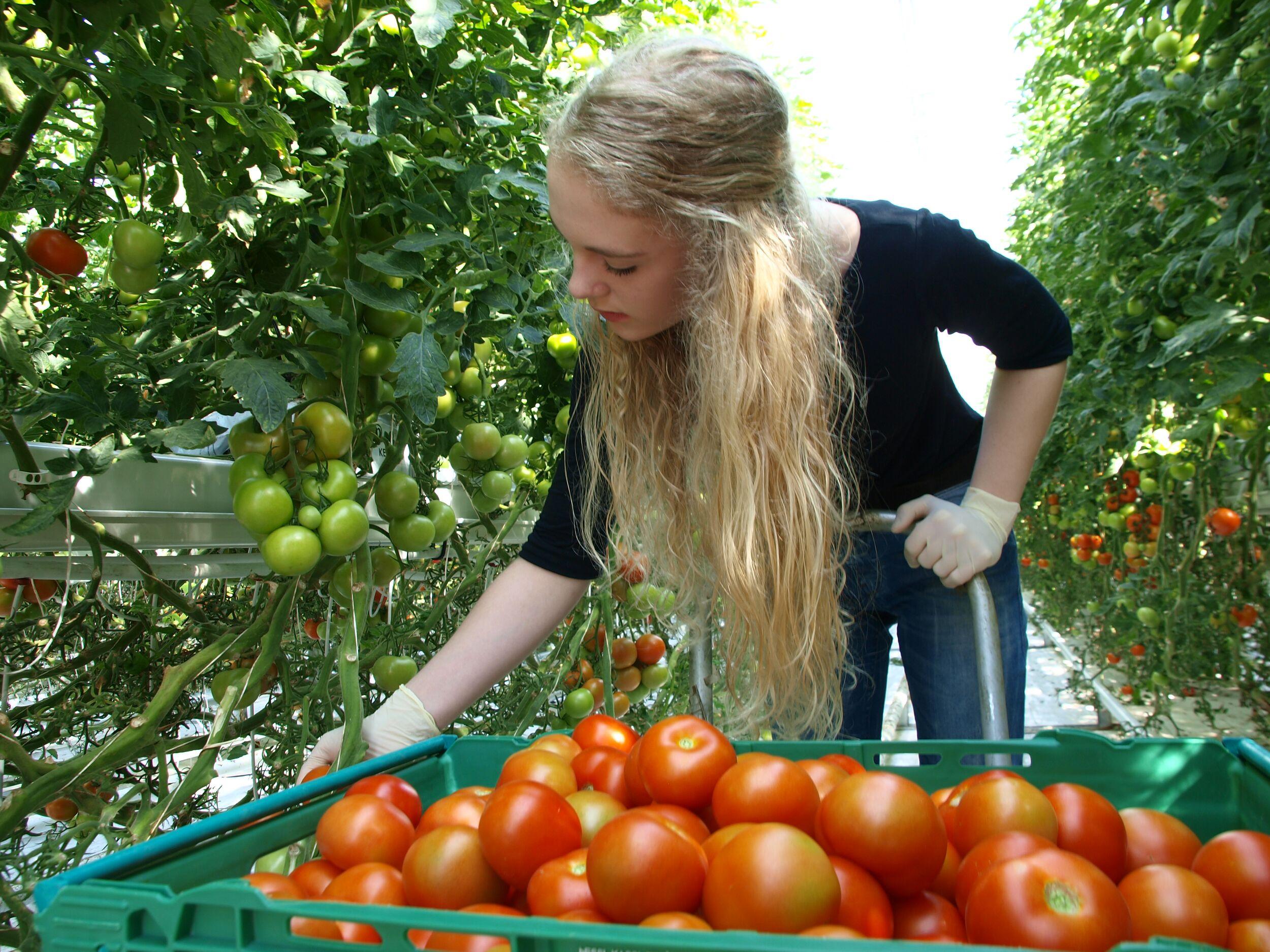
The Golden Circle & Friðheimar Greenhouse
This best-selling tour of Iceland’s most famous landmarks includes a visit to Friðheimar Greenhouse. The Golden Circle encompasses the must-see sights of Þingvellir National Park, the golden Gullfoss waterfall, and the bubbling geothermal region of Geysir. Experience the classic Golden Circle landmarks with a sustainable twist, a stop at Friðheimar!
Related tours

The Golden Circle & Friðheimar Greenhouse
This best-selling tour of Iceland’s most famous landmarks includes a visit to Friðheimar Greenhouse. The Golden Circle encompasses the must-see sights of Þingvellir National Park, the golden Gullfoss waterfall, and the bubbling geothermal region of Geysir. Experience the classic Golden Circle landmarks with a sustainable twist, a stop at Friðheimar!

6-Day Icelandic Wellness Package
Golden Circle, Blue Lagoon, Reykjavík Food Walk, Snæfellsnes. Relax, recharge, and explore Iceland’s most stunning natural wonders with this 6-day (5-night) Icelandic Wellness package. This tour blends ultimate relaxation with breathtaking landscapes, Icelandic flavors and seamless travel with carbon-neutral transportation and expert local guides.
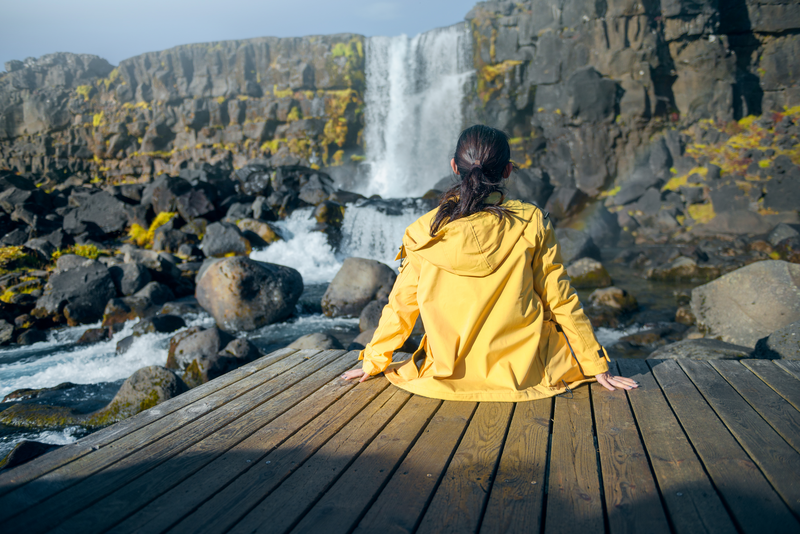
The Golden Circle & Hop On Hop Off - Combo Deal
Experience the best of Iceland's natural wonders and the charm of its capital city with our Golden Circle & City Sightseeing combo. This tour combines an insightful 8-hour journey through the iconic Golden Circle, with a visit to the Fridheimar Tomato Greenhouse along the way, and additionally, the flexibility of exploring Reykjavík at your own pace on the Hop On Hop Off bus.


